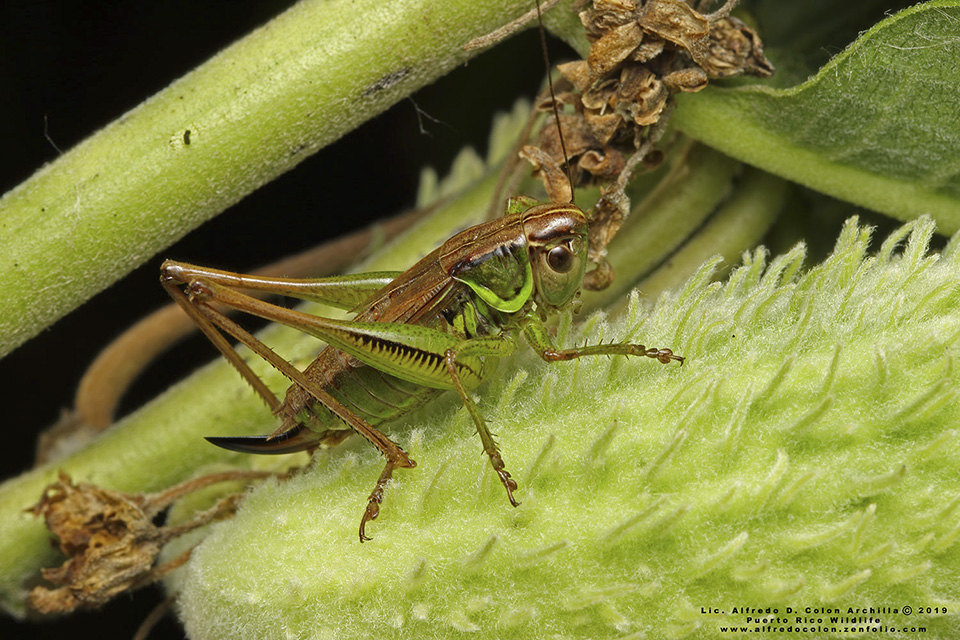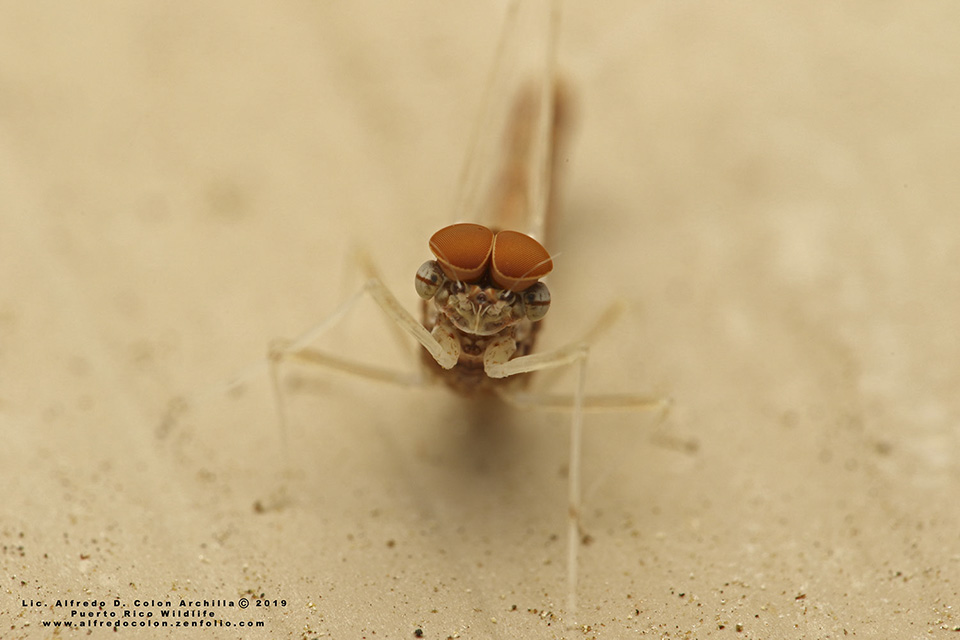
Roesel’s katydid (Metrioptera roeselii) is a small, short-winged, shield-backed katydid. It is native to Europe, where it is called Roesel’s bush-cricket. In 1953 it was reported at two locations in Quebec. These were the first North American records. It now occurs in southern Canada from Prince Edward Island to Manitoba, and in the northern United States from Maine to Minnesota south to Maryland and Iowa. Adults are found from late June through October in meadows and grassy fields, at the margins of pastures, and in ditches and roadsides. They require a moist area with tall grasses that is undisturbed by mowing or grazing.
Adults are ½″ to 1″ in length and usually dark brown, sometimes yellow, rarely green. The plate covering the first segment of the thorax is brown on top, black on the sides, and cream-colored around the margins of each side. There are three pale green or yellow spots on each side of the thorax. Most adults have short wings and cannot fly. In most years, only about 1% have long functional wings. In years with exceptionally hot summers there are more winged adults.
http://www.minnesotaseasons.com/Insects/Roesels_katydid.html

